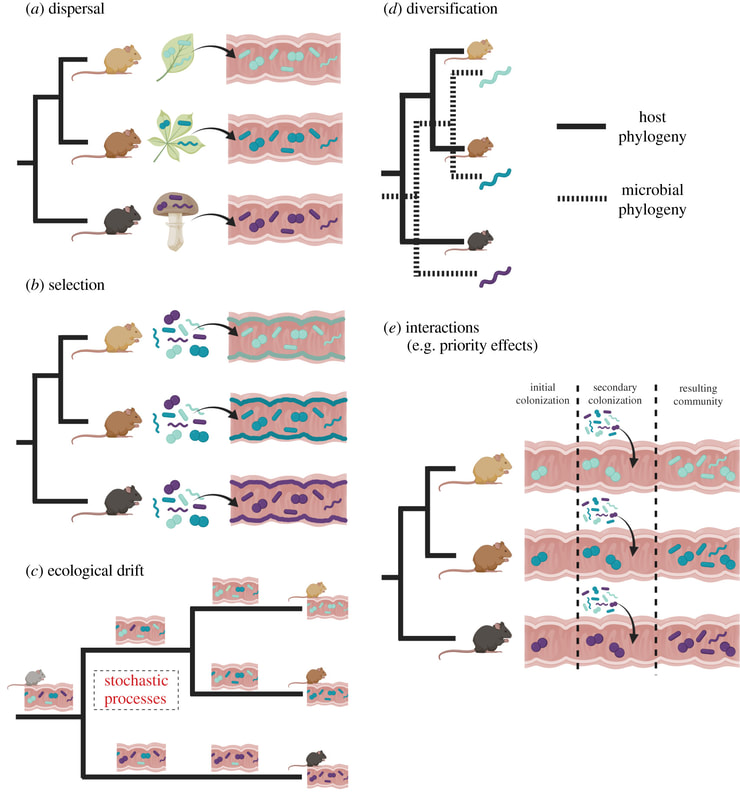How microbial communities assemble and vary across animal hosts is a major question in the microbiome field. While many environmental factors such as diet, reproductive status, or temperature can impact the structure of these communities, the evolutionary history of host species also plays a major role. We have been investigating the concept of phylosymbiosis - defined as patterns where the relationships of microbial community similarities recapitulate the phylogeny of their host species. We have demonstrated that patterns of phylosymbiosis are widespread, and exist across numerous insect clades, Peromyscus mice, species of cranes, and populations of the American pika.
|
Now, we are interested in understanding the ecological and evolutionary mechanisms that underly patterns of phylosymbiosis (a review of these potential mechanisms can be found here). Further, we are working to understand the relative contributions of host evolutionary history vs. environmental factors in sculpting the gut microbiome.
Figure: Ecological and evolutionary processes that may contribute to observed patterns of phylosymbiosis. |

